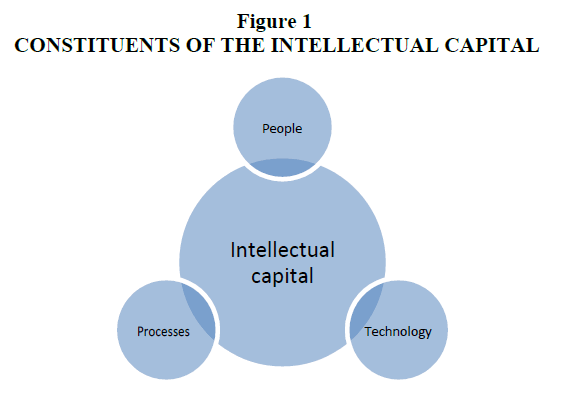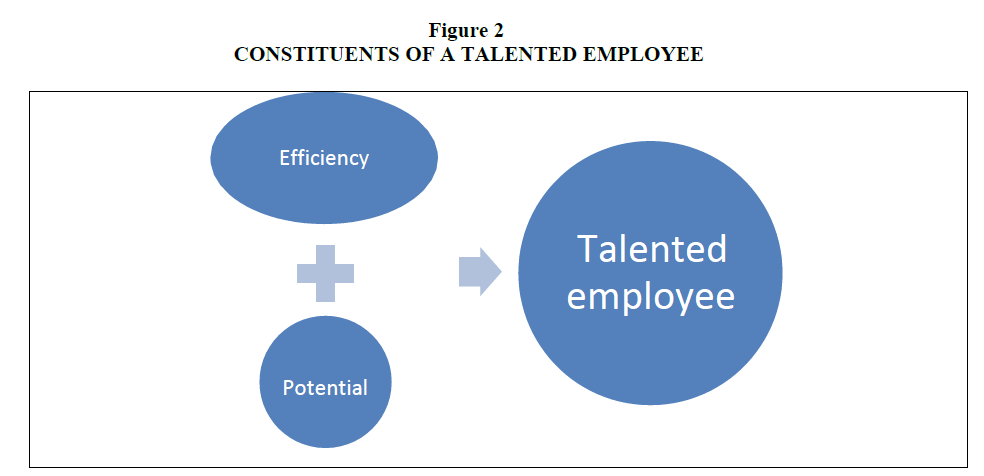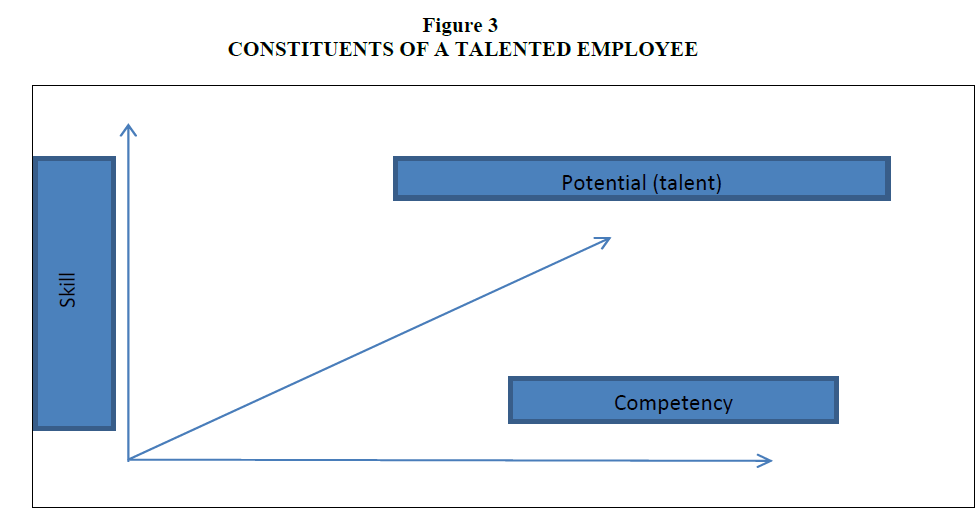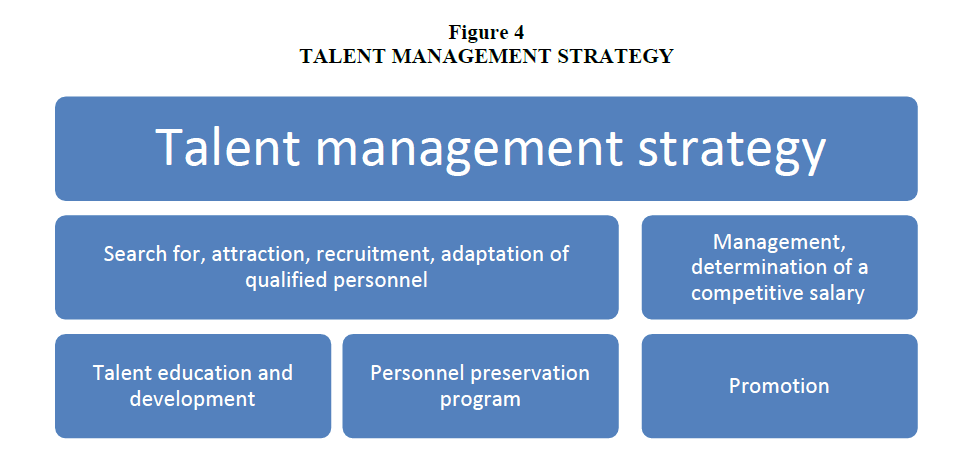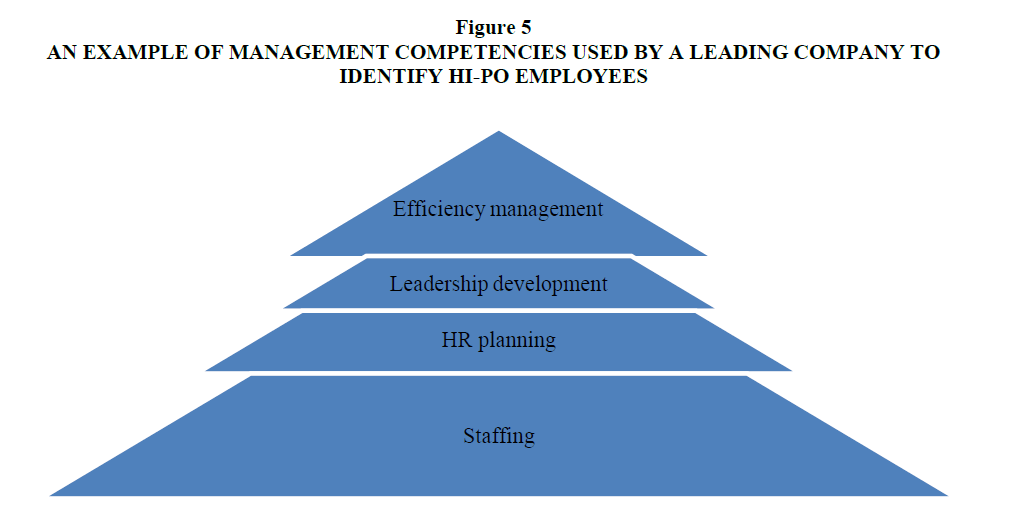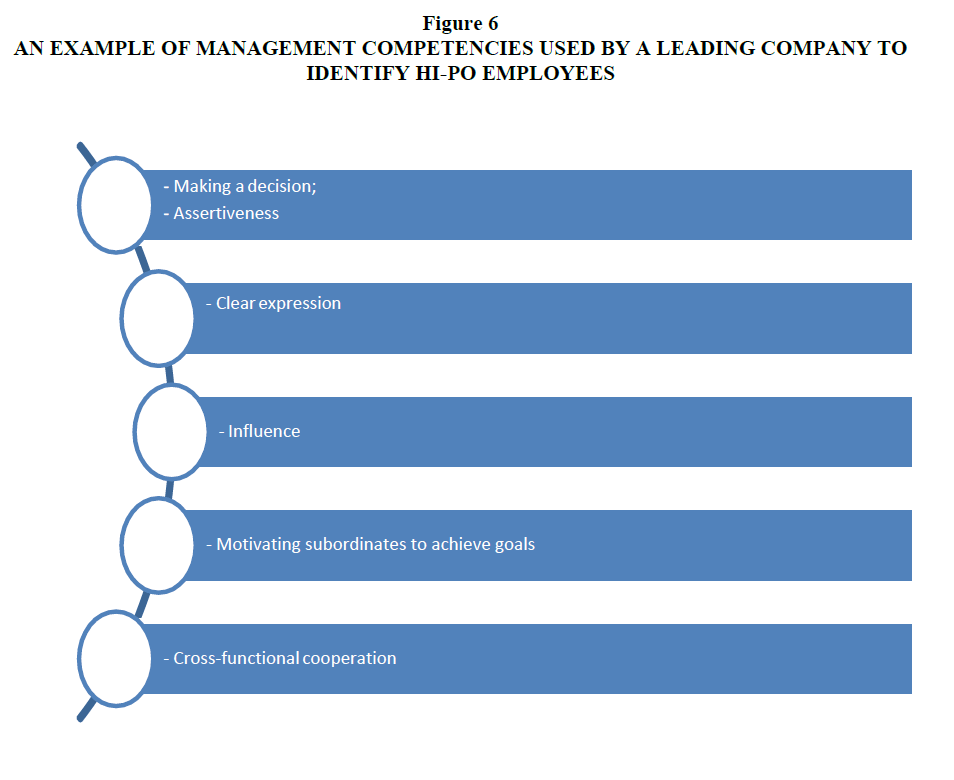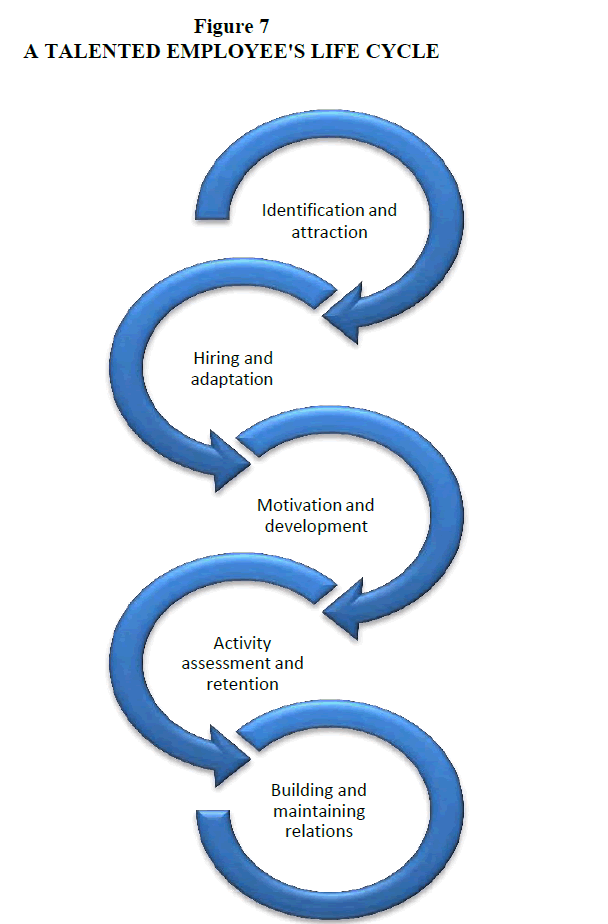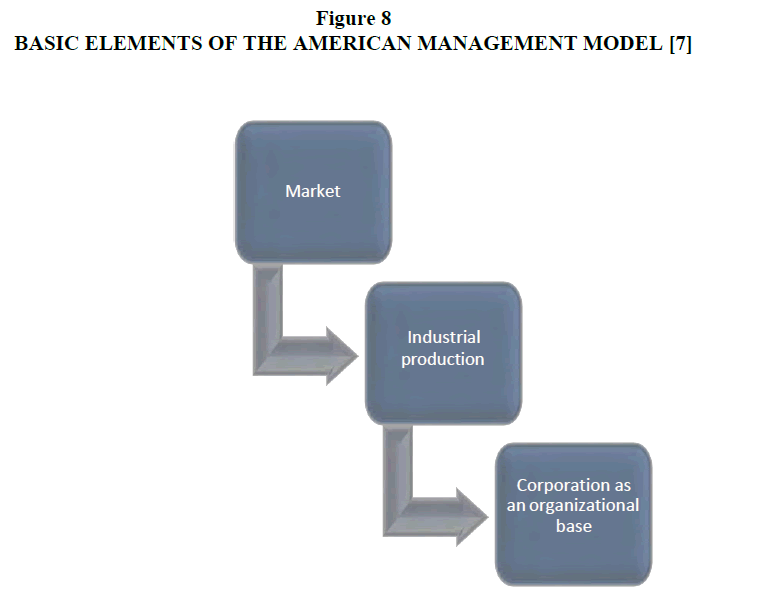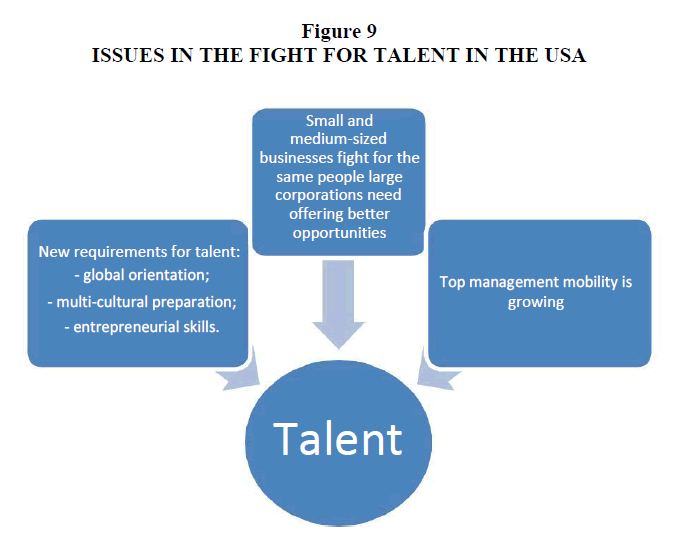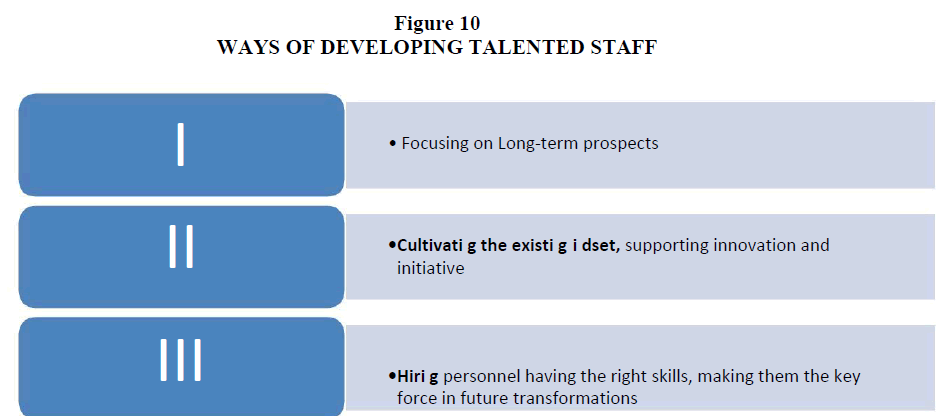Original Articles: 2017 Vol: 16 Issue: 1
Talent Management as an Essential Element in a Corporate Personnel Development Strategy
Oksana Nikolaevna Borisova, The Russian State University of Tourism and Service
Anna Aleksandrovna Silayeva, The Russian State University of Tourism and Service
Larisa Nikolaevna Saburova, The Russian State University of Tourism and Service
Natalya Vladimirovna Belokhvostova, The Russian State University of Tourism and Service
Antonina Pavlovna Sokolova, The Russian State University of Tourism and Service
Key words
development strategy, talent management, competition, human resources.
Introduction
Due to the current crisis in the country and around the world, the existence of companies is under threat, competition is getting tougher and advertising and customer service budgets are being reduced. Under such conditions, the fight for employees aiming at raising the corporate efficiency is becoming topical.
In the modern world, it is not easy to find, attract, and raise genuine leaders. And it is even more difficult to make them stay in your firm. The current century is changing our attitude to talented employees: nowadays, firms are not fighting for them, they are raising them [4]. Earlier, in the HR field, there was a term "bubble theory" which implied a talented employee making his "way through" on his own. Now, the "bubble theory" is being replaced by "talent management". Talented employees must certainly possess high potentials, be able to adapt to operational processes, and know the work process perfectly. Here arises the need to define the term “talent management".
Methods and Results
The buildup of intellectual capital is one of the tools which may be used for solving problems. It includes knowledge, skills, and production experience of certain people, as well as such intangible assets as patents, databases, software, trademarks, etc. which are efficiently used for profit maximization and other economical and technical results (Figure 1). This is a total of all employees' knowledge and/or corporate tools increasing the total knowledge, i.e. everything that ensures economic competitiveness [1]. But these are talented employees who are the most valuable since they represent the ultimate competitive advantage.
The term "talent management" had been first introduced by David Watkins of Softscape [5] in his article of 1998, and it was later developed and complemented in the work "Talent Management Systems" in 2004. Originally, the term "talent management" was used to define changes in the HR field focusing on "human potential or talent management" [9].
Talent management is a branch of HR dealing with search for and attraction of efficient employees, integration of new personnel, motivation and support for employees in order to achieve the current corporate goals.
In firms following a certain talent management policy, it is both the HR Department and corporate managers who are responsible for labor resources [2]. The process of attracting and retaining qualified employees being strategically important has been given the name of "war for talent" [3]. The English term is "Human Capital Management" ("HCM").
With the term "talent" having various definitions, it is rather difficult to form a consistent approach to human capital management. There are the following trends in defining talent management:
Talent as Aptitude
Talent is often perceived as a natural gift and mental aptitude, prominent abilities, and brilliance [6]. Talent is permanent and unique, it is given at birth, and knowledge and skills which it brings cannot be obtained without it [24].
Talent is a set of certain knowledge and valuable skills
Which are necessary for any company. Talent is abilities and aptitude which can be developed by gaining experience and skills [20].
Sometimes, the first and second approaches are combined: talent is a total of human abilities, gifts, skills, knowledge, intellect, views, character, and assertiveness, aptitude to learning and growth [18].
Talent as performance
As a rule, talent is noted if a person can achieve some prominent results thanks to his or her abilities [6].
Within this approach, there is a more suitable definition for talent management according to which those are people playing a key role in the corporate success and occupying leading positions thanks to their abilities and performance [14].
According to McKinsey experts, talents are "the best and brightest" employees and it is the "foremost" 10-20% of employees who are the most valuable for the company. In any firm, 20% of employees ensure 80% of success. Those 20% of employees pertaining to Category A must be retained in the company and given more responsibility and independence. Category B includes 64% of employees, "average performers" but their total corporate contribution amounts to 16%. The last category - Category C - includes 16% of employees who ensure only 4% of the total performance [5].
Talent Is Quite Often Defined As Potential
A talented employee is a person who has the potential for further promotion inside the company, and potential leaders "focus on the future" [5]. Talent is a "strategic balance between performance and potential". In other words, talented employees are those who demonstrate their prominent abilities, achievements, and growth potential.
The interrelation between efficient corporate activity and personnel development has always been of great interest to management theoreticians and practitioners. But the category of talent has been neither developed nor taken into consideration. Talent was first mentioned in 1990 by the consulting firm McKinsey in its report "War for Talents" which became a matter of debate in corporate meetings [1]. Researchers found that the managers of leading companies realize talented employees' value and take it into account when managing the company's personnel [11].Figures 2 and 3 help translate the definition of talent into the field of measurable quantities. The term "talent management" is related to "competency-based management". Competency implies knowledge, skills, experience, and personal qualities [6]. The latest techniques include formation of a corporate competency structure, which also includes a competency glossary facilitating formation of job descriptions.
Organizations should have a special talent management system boosting their employees' motivation for using their own potential. Talent management is a set of individualized management practices for high potentials or talent pool [3].
Talent management strategy: Researchers consider t alent management to be a strategic trend focused on the future and closely integrated with business goals [9]. In this regard, while building a talent management system, it is necessary to take into account not only the level of competencies and performance but also the employee's potential for further development and professional growth.
A Talent management policy is maintained by automated personnel management systems such as HRIS (Human Resources Information System) or HRSM (Human Resources Management System).
In Figure 4 Talent management, it is necessary to highlight the following interrelated trends allowing a complex approach for solving HCM tasks (Figure 5).
Figure 5.An Example Of Management Competencies Used By A Leading Company To Identify Hi-Po Employees.
However, it is not enough just to find and identify a talented employee. It is also necessary to provide him/her with an opportunity to fulfill his/her potential for the company's benefit, of course.
Normally, to identify potentially talented employees (Hi-Po - High Potential), an assessment is performed (Figure 6).
Figure 6. An Example Of Management Competencies Used By A Leading Company to Identify Hi-Po Employees.
The competencies model is directly interrelated with the corporate business policy. After assessment is performed, the Hi-Po pool is created. Each employee's development is ensured by formation of an individual plan; employees are invested in and promoted up the career ladder, after which their work is assessed. One should note that expenses necessary for improving a Hi- Po employee exceed those for usual employees.
Each talented employee has his or her own life cycle (Figure 7). Drawbacks emerging on any stage of the talented employee's life cycle can cause him or her to leave the company.
Considering the experience of Russian organizations, one could note the formation of a replacement planning system (talent pool) and, very seldom, succession planning. The western experience shows that 100 most thriving organizations fulfill their talent management systems on the second or third level.
According to the research carried out by Fortune, the lists of values in organizations which are leaders in the market and those of average organizations are very different (Table 2). There are three levels of talent management (Table 1).
| Table 1 : Levels Of Talent Management | |||
| I. Replacement Planning | II. Succession Planning | III. Talent Management | |
|---|---|---|---|
| Task | Risk management | Strategic staffing and development |
General succession and development |
| Target object | Key leading position | Hi-Po | Entire organization |
| Assessment | Professional potential and activity |
Assessment of progress in activity and leading competencies |
All abilities and results matter |
| Career | Linear, basically functional |
Cross-functional, cross- regional and cross- divisional rotation |
Flexible, cross-functional both geographically and businesswise |
| Frequency | Annual review | Annual review with development planning |
Continuous, with constant linking to other HR processes |
| Participants | Administrators | Managers | Participants include employees, HR specialists, administration |
| Employees' attitude | Consent | Approval | Participation |
| Table 2: Comparison Table Of Values Of Different-Level Organizations | ||
| Values 100 leading organizations | Values 100 average organizations | |
|---|---|---|
| Teamwork | Risk reduction | |
| Interest in customers | Attention to the management vertical | |
| Unbiasedness towards personnel | Support from administration | |
| Entrepreneurial attitude and innovation | Budgeting | |
Talent management in average organizations is often on the first level and that in leading companies - on the second or third level. This approach to talent management (in Russia - talent pool management) is often characterized by the beginning of assessment (personnel assessment) and preparation of projects for their development with spending more tangible and intangible assets on that. But most companies are not ready to replace an employee who was hired a long time ago (even not a very efficient one) with a new employee (even if his or her potential is higher). Earlier, an employee's talent would be assessed by the administration, but nowadays this is often done by independent assessors.
Nowadays companies are in focus and the importance of talented employees is increasing every day. A business model defines practical measures to be taken to implement a talent management technology. Below are talent management techniques in different parts of the world, namely in the USA, European countries, and the Russian Federation. Description of the American model and special conditions for performance. The American management model is based on individualism. It is characterized by the cult of a lone strong personality, an individual is in the focus of attention. Management is based on the definition of individual goals. The Anglo-Saxon school of management is based on three basic elements (Figure 8).
This business model implies a significant focus on production management.
Capitalist mode of production implies:
- mass production;
- rationalization of production;
- integrity;
- resource efficiency;
- high performance;
- equality;
- hierarchical organization;
- Financial resources [23].
Essence of approach
Firms following a certain defined talent management policy increase their profit by 26% more than their competitors [8]. A worked out talent management system is rather significant for achieving success in most industries.
The American writer A. Robertson defines talent management as follows. He notes that this is a set of tools for personnel management facilitating the attraction, efficient use, and quality of reproduction of employees' skills which allow them to make a contribution to the company's improvement. [24]
This implies an activity in personnel management aiming at attracting new employees into the innovative process, development of various motifs, and formation of creative potential in employees [23].
Administrators of many leading American companies declare that only 10% of the entire human potential depend on natural abilities. The rest 90% of an employee's talent is based on hard work and continuous practice. One of the quickest and cheapest methods of personnel preparation originated in the USA. Administrators using this method achieve better results by means of "growing" a talent from an average employee (Figure 9).
Figure 9 - "Growing" a talent from an average employee Thus, having considered the talent management techniques used in the USA, one can conclude that:
1. The American talent management business model is characterized by:
Individualism; Contractual business relations.
Currently, one of the most popular topics in Europe is fight for talent. A basic employee is an object requiring development and learning, which, in their turn, require investment. However, any fault made when choosing an employee can cost the organization a lot. These are talented leaders who give their corporations names which become famous all over the world, these are them who form their philosophy and culture. Certainly, technology must be perfect but these are individuals who found companies which later become prominent. High potentials are key assets and resources of any European organization.
The European model is a set of national models whose priorities are teamwork and multicultural environment. The European model is an intermediate position between two management cultures (Japanese and American).
The European business model is characterized by creativity and tolerance. It includes diverse approaches to corporate management dependent upon the country.
Within this ideology, quality is improved by means of total quality management which is a general organizational method for continuous improvement of quality in all organizational processes.
The European model follows a democratic management system. Its typical features are corporate culture and healthy environment. It seeks to improve organizational processes. The European model features quality management, reputation management, and knowledge management.This business model is based on research and design, innovation and creativity. The focus is on the personnel. The youth is most relied on [9].
Nowadays, while demand for qualified employees is growing, lots of organizations use the marketing approach, which implies that 20% of customers bring 80% of the profit, and these are exactly those 20% of customers a company should pay most of its attention to. The same is true for personnel management. In an organization, employees are ranged based on their contribution to the company's achievements and not based on the hierarchical principle. Companies are seeking to focus on those employees and provide them with special opportunities for their education and improvement of their qualifications.
As compared to attraction and selection of valuable staff, their retention and development are the most difficult processes. The main problem of enterprises is the lack of special subdivisions or employees responsible for the maintenance of a personnel-friendly environment and dealing with corporate culture issues. This is mostly done by managers of various levels or the first people of the organization. How one can facilitate development of talented staff is shown in Figure 10.
Most companies, trying to implement a talent management program, start with hiring employees having the right skills, as they think, to occupy leading positions. But this is not always the right way to start, as tactics must begin with a strategic process implying a comprehensive view of talent management. An organization's strategy must be obvious even before the main objectives are outlined.
European researchers declare that a lot of organizations are afraid of non-fulfillment of their promises given to those ambitious and strong people who any employer is interested in. But comparing the western and national practices one can conclude that only 10% of organizations in the Russian market fulfill their talent management programs. This is usually due to trivial concerns accompanying any significant innovation in an organization or due to the old-school trade union mindset.
In terms of the European talent management business model, the current situation in the talent management field is characterized by the following statements:
1. The matter of talented employees is becoming more popular in Europe, since it is believed that these are talented employees who give their companies names which become famous all over the world.
2. The European business model gives priority to teamwork.
3. When implementing a talent management system, it is important to start with a strategicprocess.
4. When selecting an employee, it is necessary to take into account all factors since any drawback could cost the company a lot.
5. One of the attributes of talent is the ability to grow and develop, that is why when assessing an employee it is important to take into account both the actual level of his or her competencies and futurepotential.
6. Any employee is subject to development and learning and requires investment, and these are efficient employees who must be invested in.
7. A talent management system is most important for large enterprises with over 100 employees.
8. Retaining a talent in the company is the main difficulty in talent management, since such employees require serious motivation.
The roots of the Russian business model are found in the administrative command system. Employee encouragement is rather subjective. The Russian business model features kickback systems, hidden stimulation and shadow economy, intense advertising, predatory pricing policy (transferring the burden on the consumer), monopolization, intellectually weak management (despite the rather high intellectual level of the nation).
| Table 3 : Comparison Table Of Factors Contributing To And Obstructing Development Of The Russian Model | |
| Factors obstructing the development of the Russianmanagement | Factors contributing to the formation of theRussian model |
| Weak management competencies | High scientific and intellectualpotential of the population |
| Peculiar corporate culture and mindset | Experience in state regulation of economy |
| Transition stage in the economy | Experience in mastering high |
| Traditional technocratic approach to management | Entrepreneurial attitude under liberalNation's determination |
Table 3 shows that despite the population's rich work experience, high potential and determination, there is a weak managerial competency, peculiar mindset, technocratic approach to management.
Russian organizations are getting more engaged in talent management systems. However, such solutions are still being implemented and used only by large companies which have the opportunity to grow extra HRM abilities, and have a stable human resources management database, which displays the main processes and without which talent management would not operate [16].
However, systems integrators assure that the demand for automation of talent management processes has increased several times. The supply of highly-qualified employees and managers does not always keep up with the demand which grows together with the market. A comprehensive approach to Hi-Po personnel management is more interesting for large holdings, first of all, having means for building a career ladder and a fully-fledged corporate education system [22].
Nevertheless, there are also some interesting automation solutions for medium-sized and small businesses. Cloud services (such as Oracle Taleo, SAP Success Factors) are becoming widely used, enabling organizations to use the entire power of modern solutions for talent management without implementing heavyweight complex IT solutions.
Nowadays talent management is one of the common points between national and foreign companies in HR policy. A great number of Russian organizations plan to reconsider their strategy for intellectual capital management. In this regard, changes will mostly imply using nonfinancial means of reward to motivate talented personnel.
Western sellers (e.g. Oracle and SAP) have provided some very detailed solutions for talent pool management. For Russian companies, for instance, there is a whole series of systems by SAP which automate personnel performance management, education, staffing, and manyother things. Here, one should also mention SAP, ERP, and HCM Talent Management. Oracle, in its turn, offers Oracle HCM [3].
The Russian founders of HRM also support the "hot trend", including talent management tools in their systems. For example, Monolit: Personnel include modules for assessment of staff activity, talent pool preparation, individual growth projects.
Conclusion
Russian organizations are getting more engaged in talent management systems. However, such solutions are still being implemented and used only by large companies which have the opportunity to grow extra HRM abilities, and have a stable human resources management database which displays the main processes and without which talent management would not operate.
There is no common view of talent management among practitioners, and each organization defines "talent" differently: someone thinks it means individual employees with specific potential; someone considers staff in general; some companies say that "talent" is the abilities given to a person at birth; other organizations think that this is experience acquired in the course of time.
From the point of view of business processes in companies existing under the conditions of uncertainty, the modern situation in talent management is characterized by the fact that talented employees are an important asset for solving market tasks, as well as a hard-to-get resource, and it is also important to provide them with motivation and development [21].
A detailed approach to the search, selection, motivation, education, development, retention and promotion of an employee up the career ladder is very useful for efficient functioning of a company.
Nowadays, the talent management strategy focuses on development of employees' potential. The talent management system can be a tool optimizing the performance of each employee and the entire company. To build a certain strategy, one needs a frequent "talent review" [19].
Having considered the talent management technology in the USA, one can say that the American business model for talent management is characterized by:
Attitude to work in a firm featuring a short-term employment and frequent change of job based on material goods;Economic factor (money) being the main motivation.
Some talent management elements and development prospects of that technology have been defined in the work. Employees are ready to suffer restraints, but the business world is rather skeptical about that method [15]. However, it is possible to raise the company's efficiency while following the mentioned recommendations.
Certainly, talented employees are in demand, at all times and in all places. That is why serious motivation is needed to make them stay. For instance, a great number of employees need support from top managers, which means one could arrange regular informal meetings with the organization's managers to discuss the current key issues.
For some employees the following things are also important: education opportunities, creation of real steps for career growth, provision of a system of privileges corresponding to the employee's needs, formation of a qualified mentor system, introduction of guidelines for personnel management and actual compliance with those principles, arrangement of a working environment which will contribute to the company's prosperity, and arrangement of a material and non-material reward system.
Thus, one should note that an effectively made and implemented personnel development strategy guarantees a goal-oriented and carefully planned process for attraction, use and development of employees in order to achieve corporate goals. Currently, the term "talent management" is being used more often when talking about how to raise corporate efficiency [13].
The main source of profit for any company is its talented employees. Meaningful ideas, ambitious goals, innovative production, a popular product and promoted brand - none of these would work if the company did not have a good team.
Talent management is now a very important business constituent and not just one of things to be done within personnel management but a strategic trend which defines the main references and principles for the new approach to personnel management. [14]
In the world of globalization and available technology these are personalities who play the key role. A hunt for unique employees has already been started by a great number of companies, and one can say that the war for talent did not start 20 years ago but has been on all the time since talent is sometimes the thing that provides quite a significant advantage.
References
- Barron M. (2007).Analyzing Critical Positions for Talent Needs. - Organization Development Journal. M. Barron.25(4), 115-120.
- Cappelli P. Talent on demand. P. Cappelli. Harvard Business Press, Boston, 2008.
- Farndale E., Scullion H., Sparrow P. (2010) The Role of the Corporate HR Function in Global Talent Management.Journal of World Business. E. Famdale. 45(2), 161-168.
- Lattner D. The Talent Imperative Boardroom Briefing. The Consultants Issue. D. Lattner. Winter. P32-34. [Electronic resource] - Access mode. - URL: www.directorsandboards.com/BBWinter07.pdf (accessed: 27.11.2016)
- Lewis R.E., Heckman R. J.(2006) Talent Management: A Critical Review. Human Resource Management Review.R.E. Lewis.(16) 139-154.
- Miller D, Desmarais S. (2007) Developing Your Talent to the Next Level: Five Best Practices for Leadership Development. Organization Development Journal. D. Miller. 25(3), 37-43.
- Ulrich D. The Talent Trifecta. - [Text] Workforce Management. September. / D. Ulrich. - 2006. - P. 32-33. Abdukarimov V.I. Strategiya razvitiya personala v sisteme strategicheskogo menedgmenta [Personnel developmentstrategy in a strategic management system] // Sotsialno-ekonomicheskiye yavleniya i protsessy [Social and economic phenomena and processes]. Tambov. - 2014. 9(8). 7-10.
- Baranova T.S. Opyt upravleniya talantami v Rossii [Russia's experience in talent management]. In edited collection: Sovremennyi sotsium i sovremennaya molodezh [Modern society and modern youth]: aktualnyye voprosy [topical issues]. Materials form the Russian Research and Practice Conference. Federal State-Funded Educational Institution of Higher Professional Education "Perm State National Research University", Federal State-Funded Educational Institution of Higher Professional Education National Research University "Higher School of Economics". 2014. pp. 42-46.
- DimbaktiyevaE.Z., Kryukova A.A. Effektivnost sistem upravlenita talantami (2015). Mezhdunarodnyi studencheskiy vestnik [Efficiency of talent management systems. International Student Scientific Bulletin]. (4-2). pp. 322-323.
- Dolgacheva M. Talentship - a strategic approach to HR. M. Dolgacheva. - [Electronic resource] - Access mode. - URL: http://www.trainings.ru/library/articles/?id=9820 (accessed: 26.11.2016)
- Eremina I.Yu., Lavrov I.I. Upravleniye razvitiyem menedzherov organizatsii v ramkakh strategiy upravleniya talantami [Control over corporate managers' development within talent management strategies]. Works of
- I.M. Gubkin Russian State University of Oil and Gas. 2010. No. 2. pp. 152-160.
- Kartashov S.A., Odegov Yu.G., Shatalov D.V. Omsk University Bulletin. Series: Ekonomika [Economics]. 2013.(1) pp. 85-94.
- Latukha M. Talantlivyye sotrudniki v rossiyskikh i zarubezhnykh kompaniyakh [Talented employees in Russian and foreign companies]. // Economics Portal. / M. Latukha. - [Electronic resource] - Access mode. - URL: http://institutiones.com/general/2144-talantlivye-sotrudniki-v-rossiyskix-i-zarubezhnyx kompaniyax.html (accessed: 26. 11. 2016).
- Nekrasova N.A. Upravleniye talantami (2011). Upravleniye chelovecheskim potentsialom [Talent management.Human potential management] (4). pp. 326-332.
- Odegov Yu.G. Upravleniye talantami - realnost sovremennogo menedzhmenta(2015) [Talent management - modernmanagement reality]. Omsk University Bulletin. Series: Ekonomika [Economics] (1), 92-99.
- Panova A.G. Upravleniye HR-sistemoy na sovremennykh predpriyatiyakh [Managing an HR system in modern enterprises]: tutorial. FGBOOU WAUGH "RSUTS" - Moscow,75 p.
- SerkovaN.V., Antokhova M.V. Upravleniye talantami kak sposob povysheniya effektivnosti i konkurentosposobnosti organizatsii [Talent management as a means of increasing corporate efficiency and competitiveness]. Menedzhment i biznes- administrirovaniye [Talent management as a means of increasing corporate efficiency and competitiveness. Management and business administration]. 2015. (2)155-162.
- Suchkova E.E. Formirovaniye strategii upravleniya personalom v usloviyakh innovatsionnogo razvitiya ekonomiki (2016) [Formation of a personnel management strategy in the midst of innovative economic development] In edited collection: Innovatsionnoye razvitiye rossiyskoy ekonomiki IX Mezhdunarodnaya prakticheskaya konferentsiya [Innovative development of the Russian economy IX International Research and Practice Conference]. Ministry of Education and Science of the Russian Federation; Plekhanov Russian Universityof Economics; Russian Humanitarian Science Foundation. p. 295-298.
- Ustinova I.S., Nikonova M.A. Upravleniye talantami kak innovatsiya v upravlenii personalom(2015) [Talent management as innovation in personnel management]. In edited collection: ekonomika Rossii v XXI veke [Russian economy in the 21st century]. An edited collection of scientific works of the XII Russian Research and Practice Conference "Economic sciences and applied research". In 2 volumes. Edited by G.A. Barusheva, L.M. Borisova; Tomsk Polytechnic University. pp. 92-96.
- Baskina T. Tekhnika uspeshnogo rekrutmenta [Successful recruitment technique]. / T. Baskina, (2014) [Text] M.:Alpina Publisher. - 288 p.
- Ivanova S. Poiski otsenka lineynogo personala(2014) : Povysheniye effektivnosti i snizheniye zatrat [Search and assessment of linear personnel: Increasing efficiency and reducing cost] S. Ivanova [Text] M.: Alpina Publisher,129 p.
- Katzenbach D. Kompandnyi podhod: Sozdaniye vysokoeffektivnoy organizatsii [Building a highly efficientorganization]. / D. Katzenbach, D. Smith. - [Text] - M.: Alpina Publisher, 2013. - 376 p.
- Cohen A., Harcourt G. Sudba diskussii dvukh Kembridzhey o teorii kapitala (2012) [Whatever Happened to the Cambridge Capital Theory Controversies]. / A. Cohen. - [Text] - M.: Voprosy ekonomiki [Economic issues]. (8) pp. 4-27.
